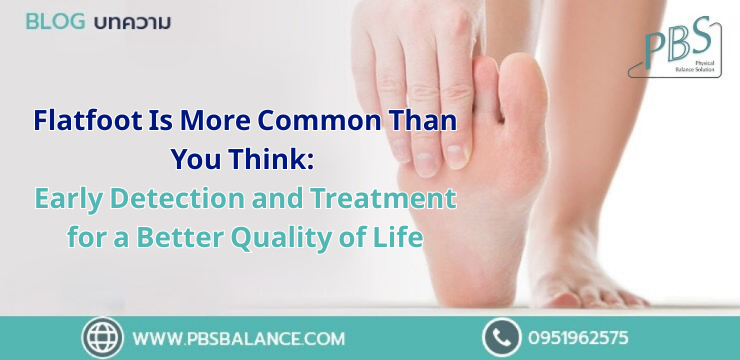
Many illnesses and musculoskeletal conditions can develop silently, catching us off guard. Flatfoot, or pes planus, is one such condition—frequently overlooked and often misunderstood. While many people may have heard the term, few truly understand its implications. In reality, you could already be living with this condition without realizing it. Early detection and appropriate intervention are essential to restore mobility and improve long-term foot health.
What Is Flatfoot?
Flatfoot, or pes planus, is one of the most common structural foot deformities worldwide. It affects approximately 20 to 37% of the global population and can reach even higher rates in some populations. One contributing factor is footwear choice, specifically wearing flat sandals or improper footwear that offers minimal arch support and inadequate protection—both of which can worsen the condition.
How to Recognize the Signs of Flatfoot
Although genetics plays a role in flatfoot development, it is not the sole cause. Daily lifestyle choices and physical habits significantly influence the condition’s onset and progression. Contributing factors include:
- Degeneration of the foot-supporting tendons, such as the posterior tibial tendon
- Ankle joint deterioration from prolonged use of high-heeled footwear
- Foot and ankle trauma leading to skeletal misalignment
Flatfoot may not cause immediate concern, but early symptoms should not be ignored. Common indicators include:
- Pain in the ankle or arch after walking or standing for long periods—even with supportive footwear
- Numbness in the soles of the feet
- Impaired balance or stability
- Pain when walking up or down stairs
- Tightness in the plantar fascia or Achilles tendon
- Inability to tiptoe or raise the heel
- Frequent ankle sprains, especially during routine activities or sports
These signs reflect underlying biomechanical problems. If you experience any of them, it is important to seek medical evaluation promptly to prevent the condition from progressing, even if you didn’t have it as a child. Many people believe that flatfoot is only present from childhood, but this is not always true. While some children are born with flat arches, acquired flatfoot can develop in adolescence or adulthood due to structural or functional deterioration.
The key message: flatfoot is not a distant or irrelevant issue. If left unaddressed, it can impact your ability to walk, run, or participate in daily activities, leading to discomfort, postural issues, or chronic joint stress.
Professional Support and Advanced Treatment Options at PBS
If you are experiencing foot pain, poor balance, or suspect you may have flatfoot, consider consulting a specialist. At PBS, trained professionals offer biomechanical assessments and customized orthotic solutions, including:
- Arch support insoles designed with American orthopedic technology
- Postural correction strategies to restore proper foot alignment
- Pain management and prevention of secondary injuries
- Ongoing follow-up care to monitor progress and ensure long-term improvement
The goal of treatment is not only pain relief but also enhanced mobility and improved quality of life. With the right support, you can return to walking comfortably, enjoying physical activities, and participating in daily life without limitation.
If you continue to experience persistent foot pain despite trying all natural treatment methods, consult a specialist promptly. At PBS, our team of foot care specialists provides services including custom orthotic insoles for plantar fasciitis and corrective devices for foot alignment. These solutions are personalized to treat the root cause and deliver the best possible outcomes.
Facebook: PBSofficial.TH
Line Official: @pbs.official
Source